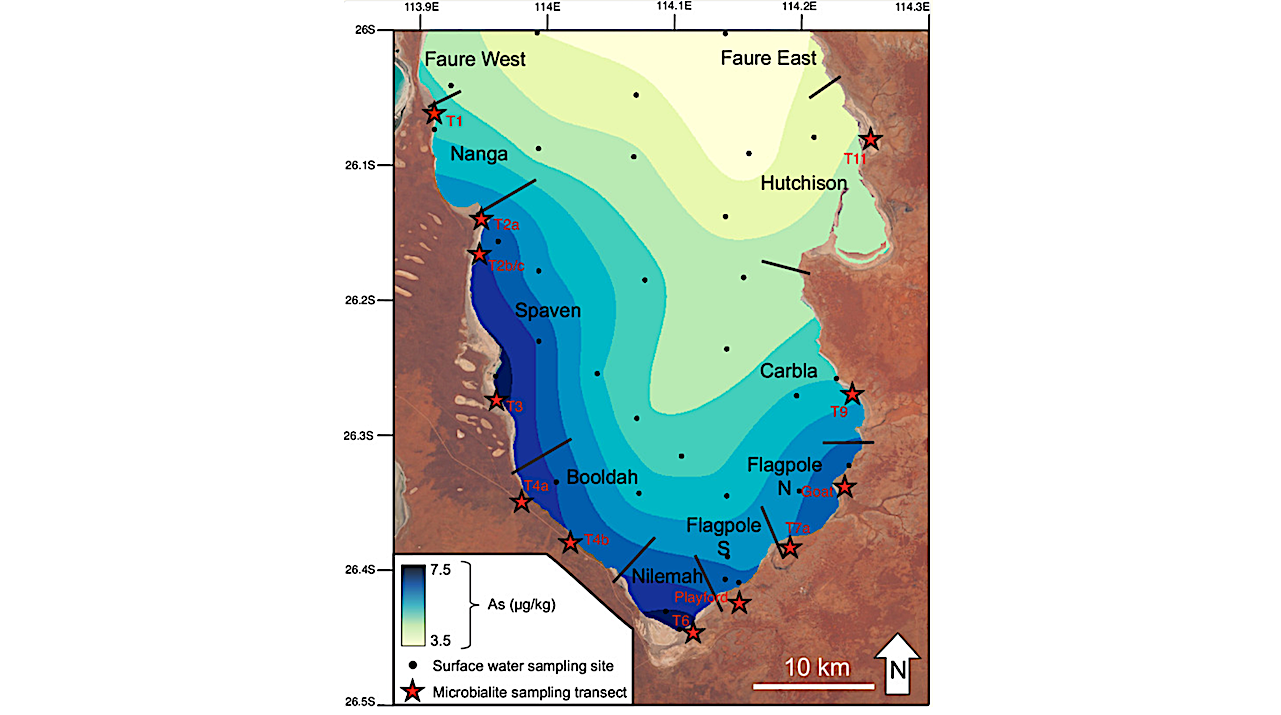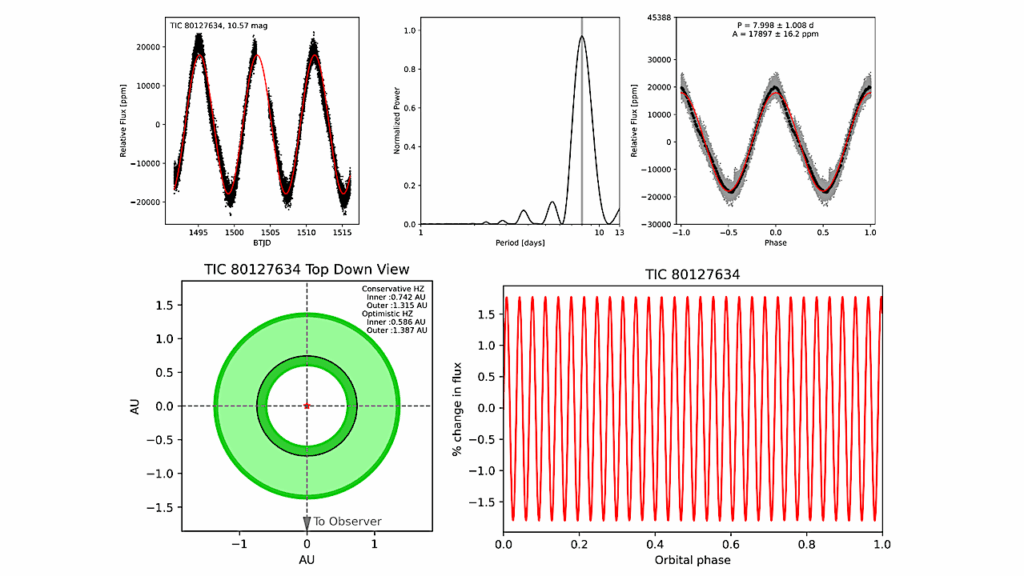Now Reading: Arsenic Enrichment Patterns Are Defined By Microbialite Morphology, Fabric, And Accretion Mechanism.
-
01
Arsenic Enrichment Patterns Are Defined By Microbialite Morphology, Fabric, And Accretion Mechanism.
Arsenic Enrichment Patterns Are Defined By Microbialite Morphology, Fabric, And Accretion Mechanism.


Concentrations are shown in µg/kg. Black circles represent seawater sampling locations; red stars denote the shoreline position of microbialite sampling transects (coordinates listed in Supplementary Table 3). Black lines represent boundaries of provinces in Hamelin Pool as previously defined32. The map is overlaid on Copernicus Sentinel data (2025) accessed via Copernicus Browser (CC BY 4.0). — Nature Communications
Microbialites accrete through microbe-environment interactions and incorporate elements like arsenic, creating enrichment patterns that can preserve evidence of ancient microbial activity.
However, the effects of morphology, fabric, and accretion mechanism on arsenic incorporation in microbialites is poorly understood, complicating the use of arsenic enrichment patterns as a chemical biosignature.
By analyzing arsenic concentrations in actively accreting microbialites with diverse architectures from Hamelin Pool, Australia, we document the effects of morphology, fabric, and accretion mechanism on arsenic enrichment patterns.
Our results demonstrate that arsenic enrichment patterns originate from microbial activity, sedimentary inputs, and seawater chemistry, the proportions of which vary with changing aspects of microbialite morphogenesis.
Here we show that initial microbialite architecture is a fundamental yet underexplored factor that controls the geochemical composition of microbialites through geological time.
Astrobiology
Stay Informed With the Latest & Most Important News
Previous Post
Next Post
-
 012024 in Review: Highlights from NASA in Silicon Valley
012024 in Review: Highlights from NASA in Silicon Valley -
 02Panasonic Leica Summilux DG 15mm f/1.7 ASPH review
02Panasonic Leica Summilux DG 15mm f/1.7 ASPH review -
 03How New NASA, India Earth Satellite NISAR Will See Earth
03How New NASA, India Earth Satellite NISAR Will See Earth -
 04And Thus Begins A New Year For Life On Earth
04And Thus Begins A New Year For Life On Earth -
 05Astronomy Activation Ambassadors: A New Era
05Astronomy Activation Ambassadors: A New Era -
06SpaceX launch surge helps set new global launch record in 2024
-
 07Space Force plans new ‘Futures Command’ amid pressure to speed up modernization
07Space Force plans new ‘Futures Command’ amid pressure to speed up modernization





















